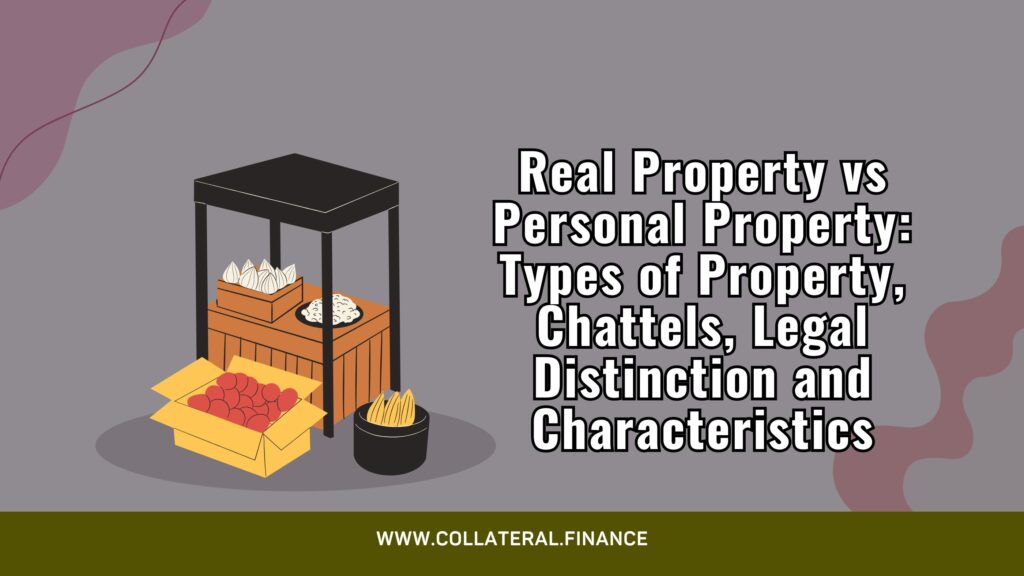The Fixed Charge and Floating Charge (The Company Charge): Attachment, Crystallisation and Priority

1. What is Fixed Charge and Floating Charge?
A fixed charge is a type of security interest that can attach to specific, identifiable assets of a borrower (typically a company), while a floating charge is a security interest over a pool of changing assets, which crystallises into a fixed charge upon certain events like default or liquidation.
1.1 Legal Definition of Fixed Charge and Floating Charge (The Company Charge)
Fixed Charge and Floating Charge: Understanding the legal difference between fixed charges and floating charges is essential for both lenders and borrowers in the realm of secured lending.
1.1.1 What is a Fixed Charge?
A fixed charge is a type of security interest attached to specific, identifiable assets of the borrower, like real estate, machinery, or vehicles. Once established, the company cannot dispose of or deal with these assets without the lender’s consent.
This restriction ensures that the asset remains available to satisfy the debt if the borrower defaults. Common examples of fixed charges include mortgages on real estate and charges over specific equipment. The key features of a fixed charge include:
- Specificity: It is attached to specific assets.
- Control: The borrower cannot sell or dispose of the asset without the lender’s consent.
- Precedence: In the event of default, fixed charge holders have priority in repayment over floating charge holders and unsecured creditors.
1.1.2 What is a Floating Charge?
Unlike a fixed charge, a floating charge is a dynamic form of security, not attached to any specific asset. It ‘floats’ over a class of assets, like product inventory or receivables.
The company retains the freedom to use, sell, or replace these assets in the ordinary course of business without seeking the lender’s permission.
The charge “floats” over the assets until a specific event, known as crystallisation, occurs. Upon crystallisation—triggered by events like default on loan repayments or the company’s insolvency—the floating charge becomes fixed, and the lender gains control over the assets to recover the outstanding debt.
The main characteristics of a floating charge are:
- Flexibility: It allows the borrower to use, sell, or trade the secured assets in the ordinary course of business.
- Crystallisation: The charge ‘crystallises’ into a fixed charge upon certain events like default or liquidation, attaching to the assets then held.
1.2 Legal Implications of Fixed Charge vs Floating Charge
- Creation and Perfection: The creation of a fixed or floating charge requires a formal agreement between the lender and borrower. However, the perfection process, involving registration and public notice, can vary depending on jurisdiction and the nature of the charge.
- Priority in Repayment: Fixed charge holders generally have a higher priority over floating charge holders. This means they are more likely to recover their investment in case of default or insolvency.
- Crystallisation of Floating Charges: The moment a floating charge crystallises, it becomes a fixed charge on the current assets. This change can be triggered by contract terms or events like cessation of business or appointment of a receiver.
2. Advantages and Disadvantages of Fixed Charge and Floating Charge
For Lenders:
- Fixed Charge: Offers higher security and priority but less flexibility in terms of the borrower’s ability to manage assets.
- Floating Charge: Provides a broader security base covering a fluctuating pool of assets, though with lower priority.
For Borrowers:
- Fixed Charge: Imposes restrictions on asset management, potentially affecting liquidity and operational flexibility.
- Floating Charge: Allows freedom in handling current assets but may lead to issues upon crystallisation, affecting a broader range of assets.
3. What Types of Assets are Typically Subject to a Floating Charge?
Floating charges typically cover a company’s current, changeable assets, such as inventory, accounts receivable, and cash. These assets are integral to daily business operations and fluctuate in value and quantity over time.
A floating charge allows the company to use and trade these assets freely in the normal course of business until an event like default or liquidation causes the charge to crystallise into a fixed charge, attaching to specific assets available at that time.
4. Fixed Charge vs Floating Charge
The legal distinction between fixed and floating charges hinges on the degree of control the lender exercises over the charged assets.
A fixed charge imposes significant restrictions on the company’s ability to deal with the asset, effectively preserving it for the lender’s benefit. Conversely, a floating charge allows the company to manage and utilise the assets freely until crystallisation.
This flexibility is essential for assets that are integral to the company’s daily operations and are subject to frequent turnover.
The landmark case of National Westminster Bank plc v Spectrum Plus Ltd [2005] UKHL 41 clarified the criteria distinguishing fixed from floating charges.
The House of Lords emphasised that the critical factor is the company’s ability to deal with the charged assets in the ordinary course of business. If the company retains this ability, the charge is likely to be classified as floating, regardless of how it is labeled in the security agreement.
| Category | Fixed Charge | Floating Charge |
|---|---|---|
| Attachment to Assets | Specific, identifiable assets (e.g., real estate, machinery) | General assets pool (e.g., inventory, receivables) |
| Flexibility for Borrower | Limited, as assets cannot be sold or disposed of without lender consent | High, assets can be used or sold in normal business operations |
| Crystallisation | Not applicable (charge is already fixed on certain assets) | Occurs upon specific events, converting to a fixed charge |
| Priority in Repayment | Higher, repaid first in case of default or insolvency | Lower, repaid after fixed charge holders and preferential debts |
| Asset Management | Restricted, borrower must seek lender approval for asset transactions | Flexible, borrower can manage assets freely until crystallisation |
| Ideal for | Securing loans with stable, valuable assets | Securing broader, fluctuating asset base typical in ongoing business operations |
| Risk for Lender | Lower, due to specific asset collateral and higher repayment priority | Higher, due to its general nature and lower repayment priority |
| Enforcement | Directly on the specific charged assets | Upon crystallisation, similar to fixed charge enforcement |
5. Practical Considerations of Fixed Charge and Floating Charge
- Risk Assessment: Lenders must assess the risk associated with fixed charge and floating charge, considering the borrower’s financial stability and the nature of the secured assets.
- Documentation: Clear, comprehensive legal documentation is essential to define rights, responsibilities, and procedures for both types of charges.
- Monitoring and Enforcement: Regular monitoring of the borrower’s financial health and asset status is crucial, especially for floating charges.
5.1 How Do Fixed Charge And Floating Charge Affect A Company’s Ability To Use Its Assets?
Fixed charges attach to specific, identifiable assets, restricting a company’s ability to freely use, sell, or lease these assets without the lender’s consent. This can limit operational flexibility and potential liquidity from these assets – see Illingworth v Houldsworth [1904] AC 355.
In contrast, floating charges cover a pool of changeable assets, such as inventory or accounts receivable, allowing the company to use, sell, or trade these assets in the normal course of business.
However, when a floating charge crystallises (due to events like default or insolvency), it restricts the company’s use of the assets under the charge, similar to a fixed charge, impacting broader asset management and operational activities.
5.2 Can New Loans Be Secured By Assets Already Under A Fixed Charge?
Securing new loans with assets already under a fixed charge is generally challenging. The first lender’s permission is often required because they hold a primary claim over the specific assets. If consent is granted, the second loan might be secured with a subordinate charge, meaning it has a lower priority in claim.
This arrangement increases the risk for the second lender, as their chances of recovering the loan amount are reduced if the borrower defaults or goes insolvent.
5.3 What Is The Relationship Between A Debenture And Fixed Charge And Floating Charge
A debenture often encompasses both fixed charge and floating charge as instruments of security for the loan it represents.
The fixed charge within a debenture is attached to specific, tangible assets like property or equipment, whereas the floating charge covers general assets like inventory or accounts receivable.
This combination allows lenders to secure a broader range of the borrower’s assets, enhancing their security while offering the borrower flexibility in asset management until certain events, like default, trigger the crystallisation of the floating charge – see Re Spectrum Plus Limited [2005] UKHL 41.
5.4 What Happens To A Fixed And Floating Charge In The Event Of A Borrower’s Insolvency?
In the event of a borrower’s insolvency, the treatment of fixed and floating charges follows distinct legal processes due to their different natures.
For fixed charges, the secured creditor has a priority claim on the specific assets to which the charge is attached. These assets are sold, and proceeds are used to repay the fixed charge holder before other unsecured creditors.
The creditor’s rights to these specific assets are generally clear-cut and take precedence over other claims, including floating charges.
Floating charges, on the other hand, cover a range of current, fluctuating assets.
Upon the borrower’s insolvency, floating charges usually crystallise, meaning they convert into fixed charges on the assets they cover at that time. However, the priority of floating charge holders is lower. They are repaid after fixed charge holders and certain preferential creditors, like employees.
The introduction of a “prescribed part” in some jurisdictions ensures a portion of the assets is set aside for unsecured creditors, reducing the amount available to floating charge holders.
This dynamic often results in floating charge holders receiving a smaller proportion of their claim compared to fixed charge holders.
6. Priority in Insolvency (Fixed vs Floating Charge Holders)
In the event of a company’s insolvency, the priority of creditors’ claims is usually determined by the type of charge held. Holders of fixed charges have priority over those with floating charges.
Specifically, the order of repayment is typically:
- Secured creditors with fixed charges
- Preferential creditors (e.g., employees’ unpaid wages)
- Secured creditors with floating charges
- Unsecured creditors
This hierarchy amplifies the importance of the charge type for lenders, as fixed charges offer a higher degree of security and priority in debt recovery.
7. Conclusion: Fixed Charge vs Floating Charge
The choice between a fixed and floating charge depends on various factors, including the nature of the borrower’s assets, the business operations, and the risk appetite of the lender.
Fixed charges offer lenders greater control and priority but impose restrictions on the company’s use of specific assets. Floating charges provide companies with operational flexibility but offer lenders a lower priority in insolvency situations.





